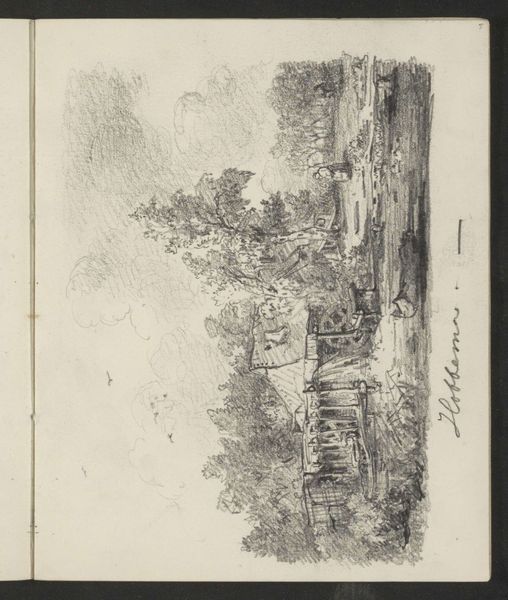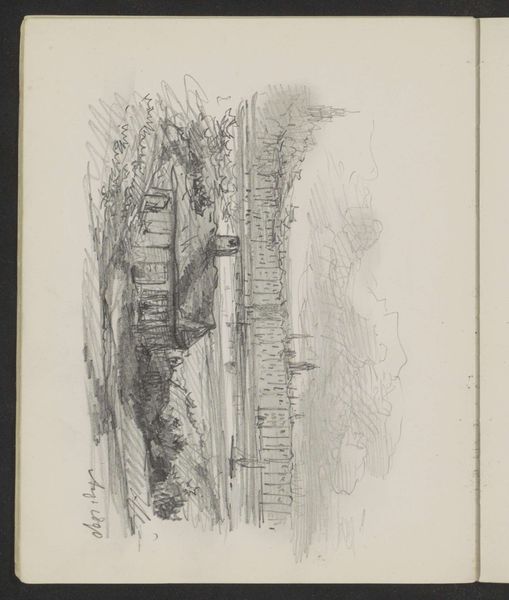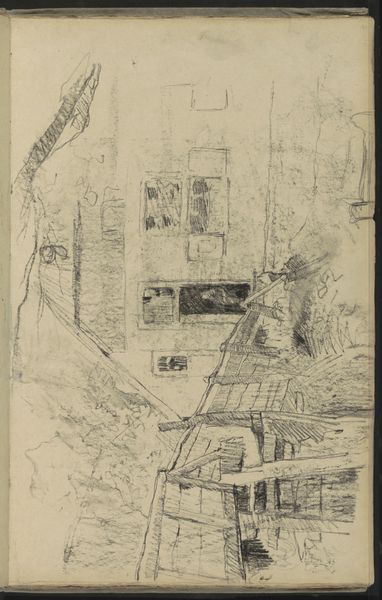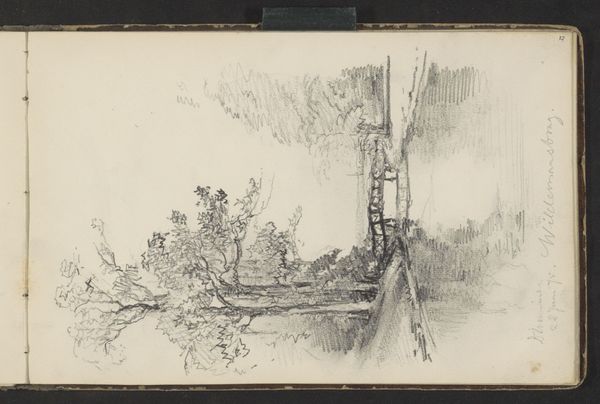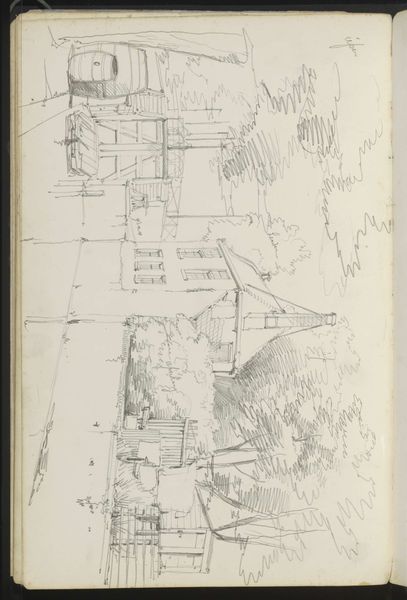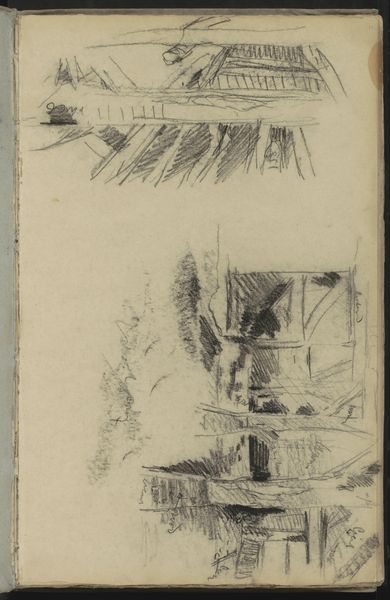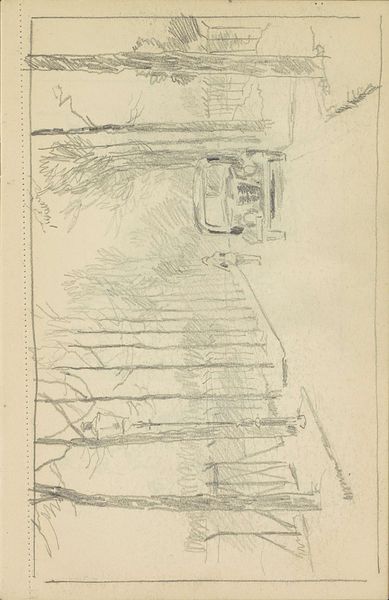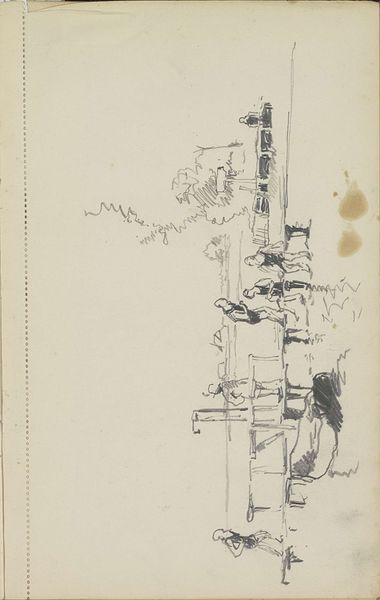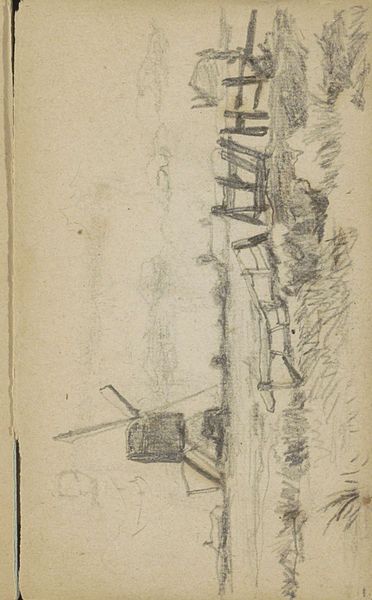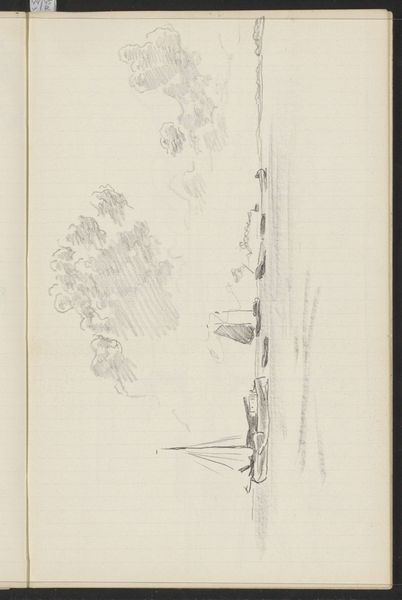
drawing, paper, ink
#
drawing
#
amateur sketch
#
toned paper
#
impressionism
#
pen sketch
#
incomplete sketchy
#
landscape
#
paper
#
personal sketchbook
#
ink
#
ink drawing experimentation
#
pen-ink sketch
#
pen work
#
sketchbook drawing
#
sketchbook art
Copyright: Rijks Museum: Open Domain
Curator: Willem Witsen created this work, titled "Farm Behind a Bridge," sometime between 1884 and 1887. It's an ink drawing on paper. Editor: Well, right away, I’m struck by its raw, almost unfinished quality. There's a sense of immediacy and process here; you can almost feel Witsen's hand moving across the page. Curator: Exactly! The linear quality is paramount. Note how the artist used varied pen strokes to suggest depth and form. The bridge is obviously a key structural element. The lines create spatial relationships, giving volume to the architectural forms in the distance. Editor: And the material rendering reinforces that, right? It’s ink, so instantly we are dealing with something cheap, easily obtainable, which speaks volumes about the context it’s created in, maybe Witsen couldn’t get hold of more durable supplies? Curator: Or perhaps it's an intentional choice? The looseness conveys an impressionistic feeling. The subject is rural life; perhaps the artist felt more detail wasn't appropriate for what he was trying to get across. Editor: Maybe, but the rugged marks denote labor to me. Witsen’s choice mirrors the everyday existence of farmers—unrefined, practical. Think about the social and economic disparities between urban centers and these rural communities he depicts… Curator: Yes, but look closely. Notice the almost calligraphic quality to the tree branches? It introduces a dynamic contrast to the rectilinear forms. Editor: Absolutely, and that layering suggests multiple work sessions too, no? Curator: Could be. There are pentimenti visible in places... I do appreciate your reading this artwork through materiality, and emphasizing the broader scope of material culture inherent in its production. Editor: And you decoded its underlying structure to create more meaning than first appeared! An interesting exercise.
Comments
No comments
Be the first to comment and join the conversation on the ultimate creative platform.

